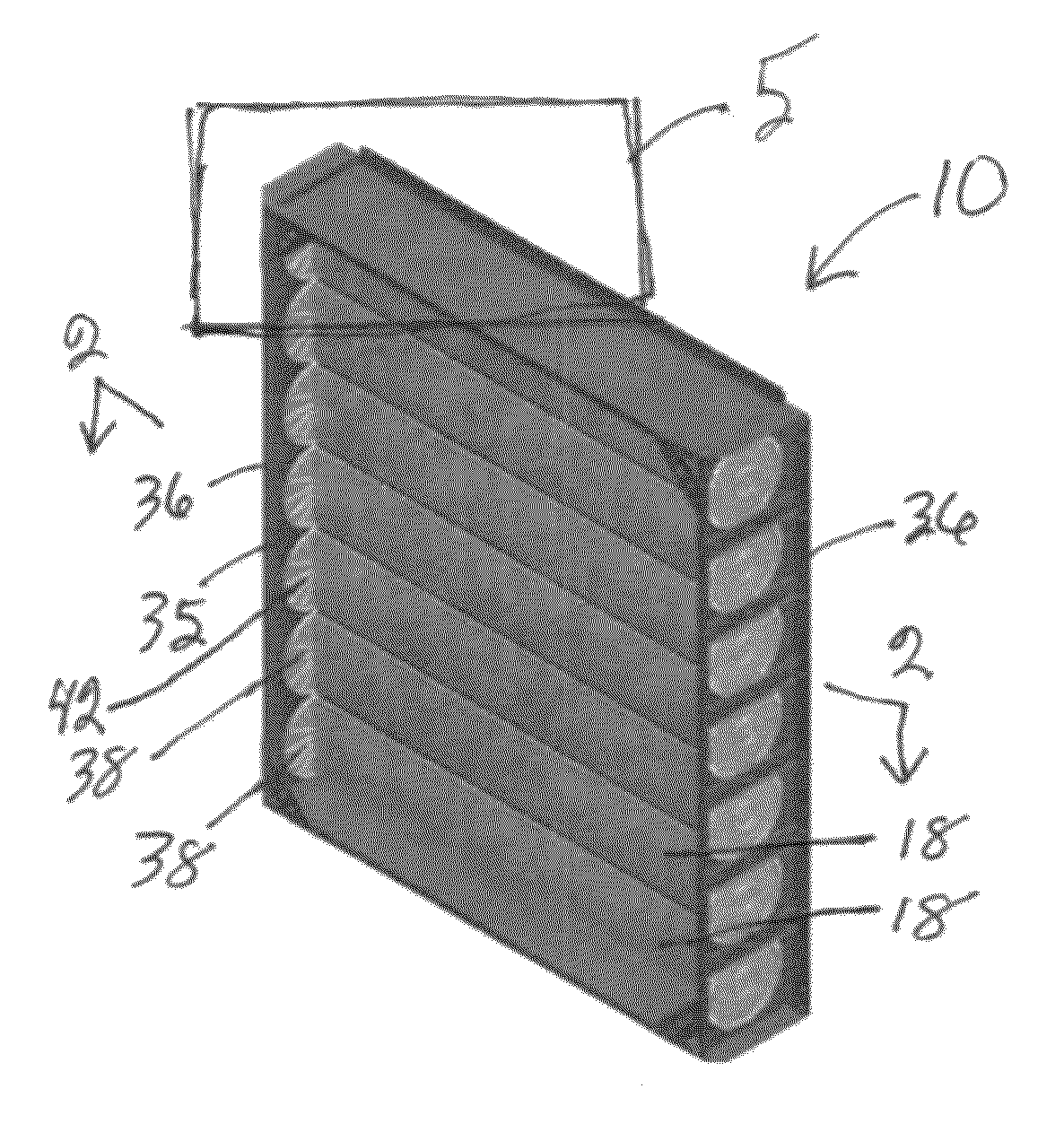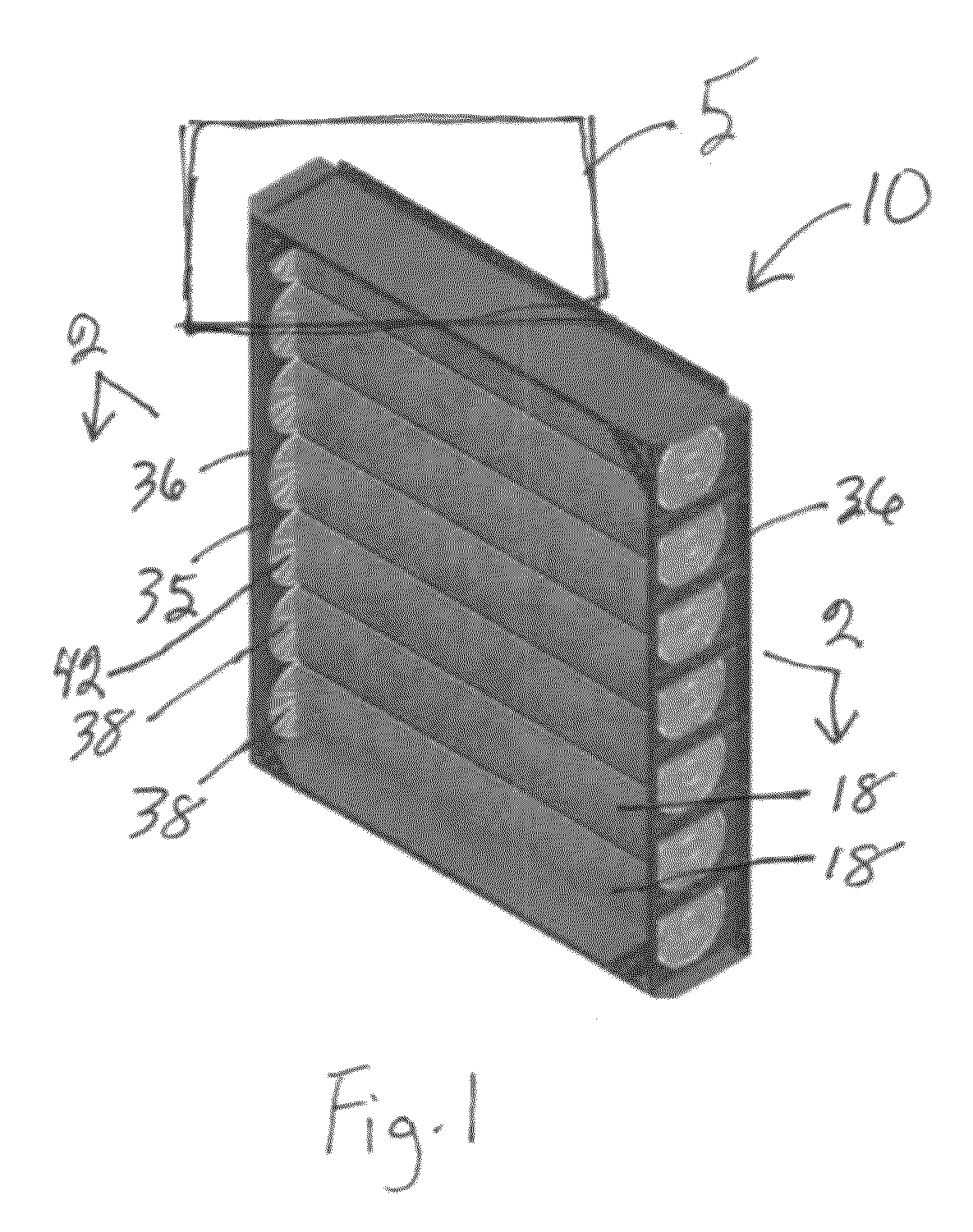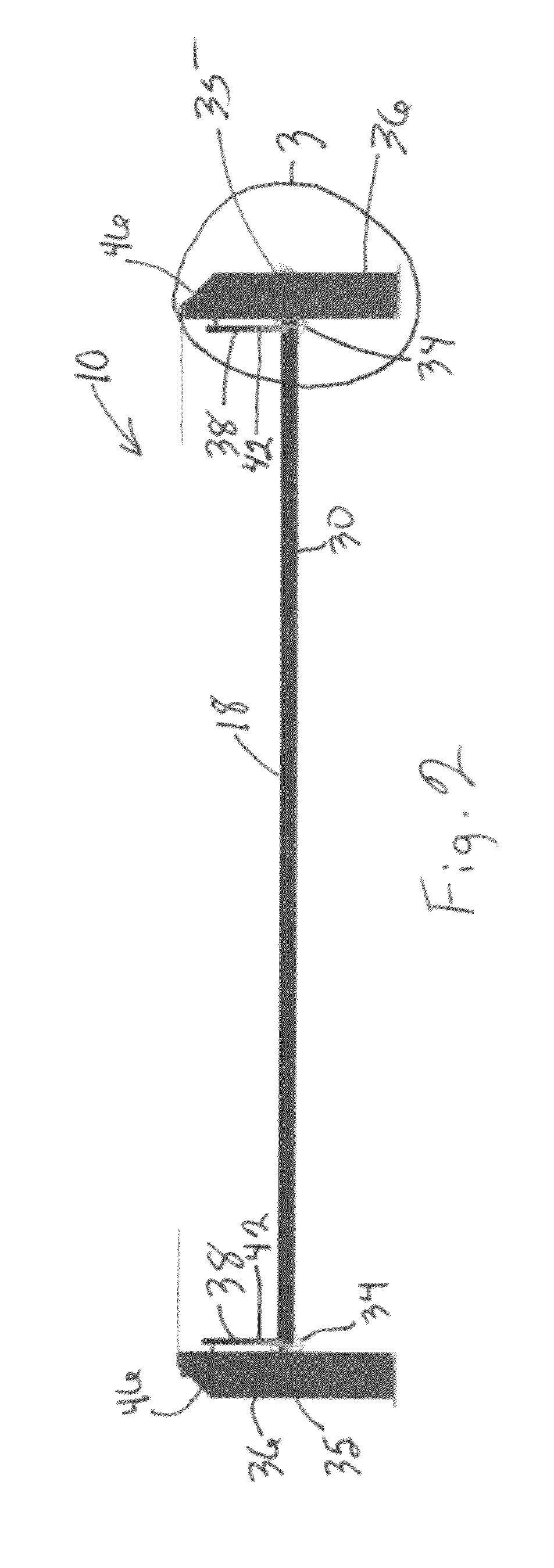Air damper
a damper and air technology, applied in the field of air dampers, can solve the problems of air dampers, air leakage between adjacent blades, and difficult sealing, and achieve the effects of reducing friction and torque, good sealing, and good sealing with the blades
- Summary
- Abstract
- Description
- Claims
- Application Information
AI Technical Summary
Benefits of technology
Problems solved by technology
Method used
Image
Examples
Embodiment Construction
[0030]Referring now to the drawings and initially to FIG. 1, there is illustrated an air damper 10 that is constructed in accordance with a preferred embodiment of the present invention. The damper 10 is low cost to make and operate, has low torque requirements, and provides a good air seal.
[0031]Referring now to FIGS. 6 and 7, the damper 10 is provided with a blade seal 12 that is square in cross sectional configuration. The blade seal 12 is provided on one of the blade edges 14 of the damper blades 18 so that the blade seal 12 engages the opposing edge 16 of an adjacent blade 18 early, i.e. before the blades 18 are fully closed in their parallel, vertically aligned orientation. The reason the blade seal 12 engages the blade edges 16 of the adjacent blade 18 early is that a diameter “D” of the diagonal 20 of the square blade seal 12 is greater in length than the length “L” of the side 22 of the square blade seal 12. This insures a good seal between adjacent blades 18 without the ne...
PUM
 Login to View More
Login to View More Abstract
Description
Claims
Application Information
 Login to View More
Login to View More - R&D
- Intellectual Property
- Life Sciences
- Materials
- Tech Scout
- Unparalleled Data Quality
- Higher Quality Content
- 60% Fewer Hallucinations
Browse by: Latest US Patents, China's latest patents, Technical Efficacy Thesaurus, Application Domain, Technology Topic, Popular Technical Reports.
© 2025 PatSnap. All rights reserved.Legal|Privacy policy|Modern Slavery Act Transparency Statement|Sitemap|About US| Contact US: help@patsnap.com



